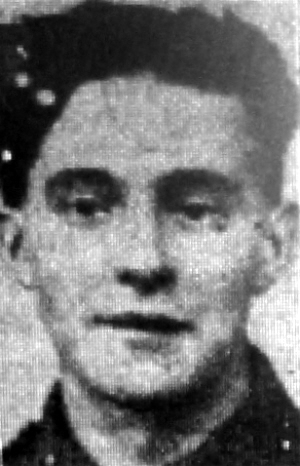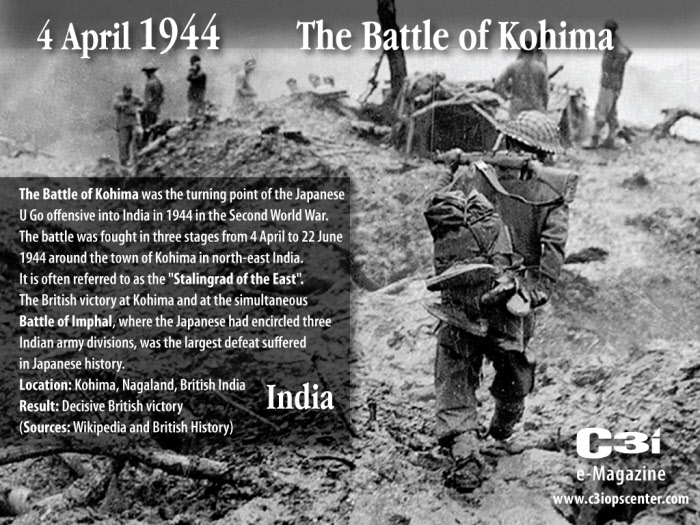
Joseph Hallas was born in Spring 1920, the son of James Hallas and his wife Lily May (nee Winpenny), of Ossett, Yorkshire, who had married in the Summer of 1917 in the Dewsbury Registration District. In 1911 James, aged 21 years, was living with his widowed mother and three of his siblings at 6, Spa Lane,Ossett. Joseph had a younger brother, Edgar, born in 1924 and a sister, Joan Hallas, born in 1926.
Lily May Winpenny, daughter of a Middlestown coal miner, was born at Unwin Station, Pennsylvania, United States of America in 1894. Her parents and her eldest sister had sailed for the USA in 1887, where they had three children, including Lily May, before returning to Ossett in 1897. The couple had another child born in Ossett in 1898. In 1901, the Winpenny family lived on South Parade Road, Ossett and, by 1911, aged 16 years, Lily May was living with her parents at 50, Junction Lane, Ossett. She was one of nine children, but sadly four of those children had died before April 1911.
In 1939 Joseph’s parents, James and Lily May Hallas, and two siblings, Edgar and Joan, were living at 14, Top Headlands, Ossett. One name is redacted and this is likely to be Joseph Hallas. Two years later, Joseph Hallas married Mary Parkin in the Summer of 1941 in Ossett, but there were no children. Widow Mary Hallas remarried in 1945 to Alan Bassham and had three children.
7th KOYLI arrived in India on the 24th October 1941, and was assigned for conversion to the Heavy Armoured Brigade, which was soon afterwards redesignated 50th Indian Tank Brigade. 149 RAC moved to the Manipur Road area in April 1944, and came under the command of 254th Indian Tank Brigade in July, when it was equipped with Grant Mk II tanks. The Brigade fought with the 5th Indian Division and the 7th Indian Infantry Divisions in Burma and was involved in the Battles at Imphal, Kohima, Kyaumaung Bridgehead, Meiktila, and Rangoon Road.
It is likely that Trooper Hallas lost his life during the bitter fighting at the Battle of Kohima in May 1944 where 149th (7th Battalion, King’s Own Yorkshire Light Infantry) Regiment, Royal Armoured Corps were providing heavy armoured support. The Battle of Kohima was the turning point of the Japanese U Go offensive into India in 1944 during the Second World War. The battle was fought in three stages from 4 April to 22 June 1944 around the town of Kohima in Nagaland in northeast India. From 3 to 16 April, the Japanese attempted to capture Kohima ridge, a feature which dominated the road by which the besieged British and Indian troops of IV Corps at Imphal were supplied. By mid-April, the small British and Indian force at Kohima was relieved. From 18 April to 13 May, British and Indian reinforcements counter-attacked to drive the Japanese from the positions they had captured. The Japanese abandoned the ridge at this point but continued to block the Kohima–Imphal road. From 16 May to 22 June, the British and Indian troops pursued the retreating Japanese and reopened the road. The battle ended on 22 June when British and Indian troops from Kohima and Imphal met at Milestone 109, ending the Siege of Imphal.
On the 4 May 1944, the British 5th Brigade secured a foothold in the outskirts of Naga Village but was counter-attacked and driven back. On the same day, the British 4th Brigade, having made a long flank march around Mount Pulebadze to approach Kohima Ridge from the south-west, attacked GPT Ridge in driving rain and captured part of the ridge by surprise but were unable to secure the entire ridge. Two successive commanders of British 4th Brigade were killed in the subsequent close-range fighting on the ridge.
Both outflanking moves having failed because of the terrain and the weather, the British 2nd Division concentrated on attacking the Japanese positions along Kohima Ridge from the 4th May onwards. Fire from Japanese posts on the reverse slope of GPT Ridge repeatedly caught British troops attacking Jail Hill in the flank, inflicting heavy casualties and preventing them from capturing the hill for a week. However, the various positions were slowly taken.
One the decisive factors was the Japanese lack of supplies. The Japanese 31st Division had begun the operation with only three weeks’ supply of food. Once these supplies were exhausted, the Japanese had to exist on meagre captured stocks and what they could forage in increasingly hostile local villages. Shortly before the siege of Kohima began, the Japanese had captured a huge warehouse in Naga Village with enough rice to feed the division “for three years”, but it was immediately bombed and the stock of rice was destroyed. The British 23rd LRP Brigade, which had been operating behind the Japanese division, cut the Japanese supply lines and prevented them foraging for food in the Naga Hills to the east of Kohima.
The largely forgotten battle is often referred to as the “Stalingrad of the East”. In 2013, the British National Army Museum voted the Battle of Imphal and Kohima to be “Britain’s Greatest Battle.”
The “Ossett Observer” had this obituary for Joseph Hallas:1
“Killed In Action, Burma – Trooper Joseph Hallas, Ossett – Mrs. Mary Hallas has received official information that her husband, Trooper Joseph Hallas, was killed in action in Burma on May 4th 1944. Trooper Hallas, who would have been 24 years of age on Thursday last (June 1st), was the elder son of Mr. and Mrs. James Hallas, Top Headlands, Ossett. He was educated at South Ossett C. of E. School, and played for the school cricket and football teams. He was employed by Messrs. Crawshaw and Warburton, at Shaw Cross Colliery prior to joining the Army in 1940. In 1941, he married the eldest daughter of Mr. and Mrs. Wilfred Parkin, Pickersgill Street, Ossett, with all of whom, as well as his parents, the deepest sympathy will be felt. Trooper Hallas, who was a much respected young man, was a regular attendee at Bethesda Chapel, Gawthorpe and a member of the choir there. His younger brother Edgar is serving in Italy.”
Trooper Joseph Hallas died on the 4th May 1944 aged 24 years and is remembered on Face 2 of the Rangoon Memorial, Burma. The Rangoon Memorial bears the names of almost 27,000 men of the Commonwealth land forces who died during the campaigns in Burma (now Myanmar) and who have no known grave.

The memorial stands in Taukkyan War Cemetery, Rangoon (Yangon), which is the largest of the three war cemeteries in Burma. It was begun in 1951 for the reception of graves from four battlefield cemeteries at Akyab, Mandalay, Meiktila and Sahmaw, which were difficult to access and could not be maintained. The last was an original ‘Chindit’ cemetery containing many of those who died in the battle for Myitkyina. The graves have been grouped together at Taukkyan to preserve the individuality of these battlefield cemeteries.2
References:
1. “Ossett Observer”, Saturday 3rd June 1944.